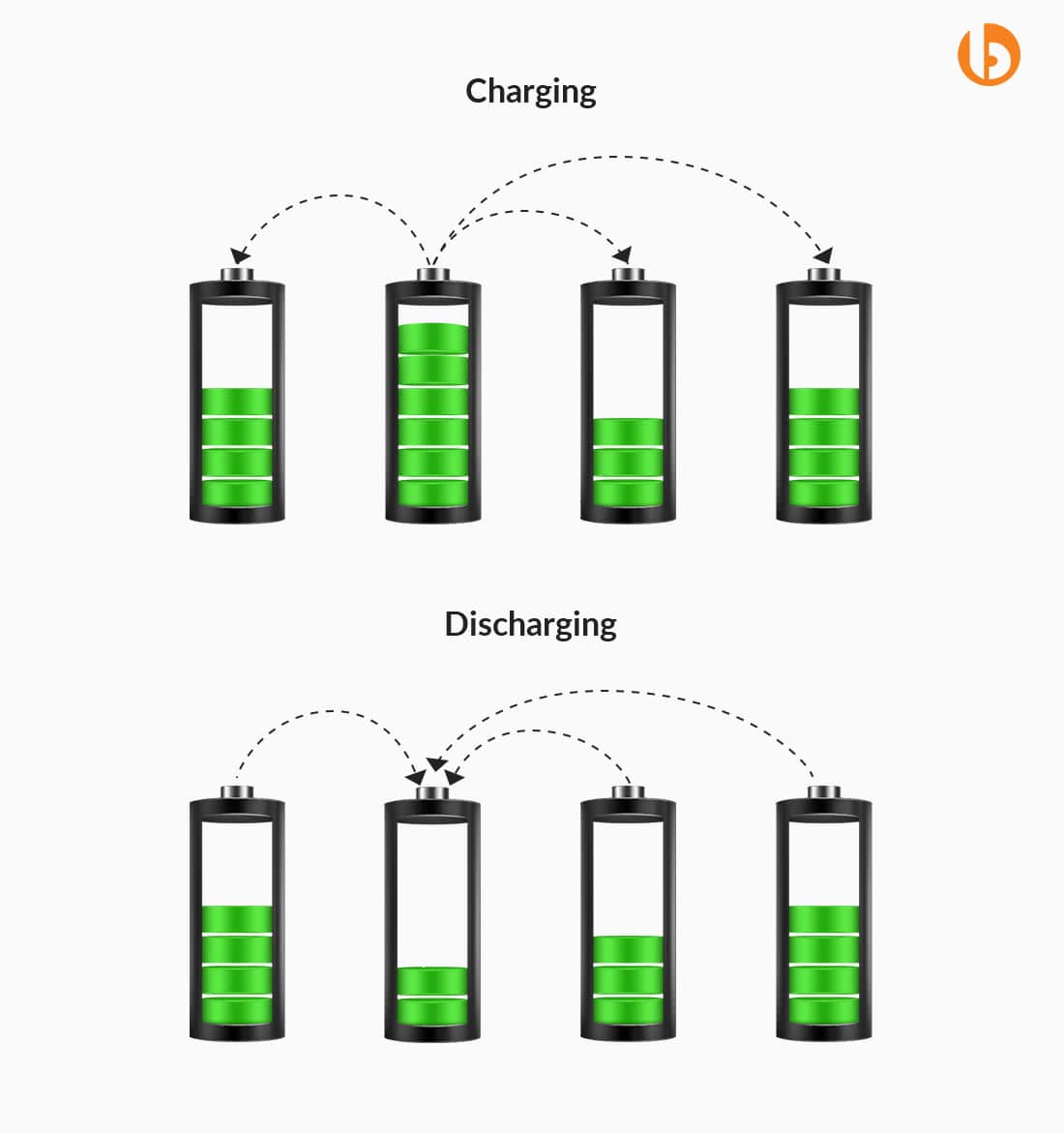Quick Summary:
Amazed about how the power of the battery fluctuates? This blog is for you if you are intrigued by the concept of balancing cell voltages of your batteries. We have covered an insight into Cell Balancing, what is Battery Cell Balancing? What are the types of cell balancing? And the various algorithms that are used for the balancing of cell voltages.
Introduction
We can only be thankful for the modern age vital energy storage devices- batteries- to keep u going on the edge, and living life to the fullest. For, if it had not been for a battery, that we can hold on to an overwhelming (and non-ending) quarter meeting without a power supply.
The science of Battery Management system BMS has enormously amazed us by acting as the kernel of battery points, keeping a check on the output, and providing security from external damages. A BMS functions include monitoring the temperature changes, arrange prevention and manage forecasts, and collecting information from the communication protocol of battery parameter analysis.
Now, when a battery consists of sequential cells in series, it surely needs proper cell balancing to keep its life cycle intact with optimization and highly performant.
What is Cell Balancing?
Battery Cell Balancing also means battery redistribution to improve the overall potential of the battery pack and emphasize each cell’s longevity. Cell Balancing enhances the State of Charge (SOC) of your battery.
An imbalance is created when every cell in the connected series of the battery pack depicts a different SOC. Such an imbalance results in the overall battery capacity equal to the weakest cell in the battery pack.
However, to optimize the battery life, we must ensure that we bring a cell balancing to equalize the overall battery of each cell in the pack.
FACT: No two cells (even if they have the same model number, manufacturer, production) have the same SoC, discharge rate, impedance, temperature, and capacity.
In the domain of Battery Management Systems (BMS), there are two types of Cell Balancing techniques available. Let’s get on them one by one.
Types of Cell Balancing

Active Cell Balancing
In an active cell balancer, energy transfers from a higher voltage to a lower voltage cell within the battery. In other words, the cell with higher SoC transfers energy to a lower SoC cell. Thus, the active cell balancing technique avoids dissipating heat energy and rather uses shuttling or converters to balance out the energy levels of the highest voltage cell and the lowest.
The charge shuttling method transfers charges to reach an equal cell voltage. Whereas, energy converts transfer energy via transformers and conductors.

Advantages of Active Cell Balancing
- Offers great performance when you have various cells in your battery having varying capacities.
- Improves efficiency of battery energies by reserving and retaining their excess energy.
- Active cell balancing enhances the cell’s life expectancy.
- It is a speedy cell balancing technique.
Disadvantages of Active Cell Balancing
- There is a loss of energy (10-20%) while transferring energy amongst cells.
- Only one-way flow of energy from higher to lower.
- It has a complex control algorithm and expensive production cost as it needs a power electronics interface.
Passive Cell Balancing
In the Passive Cell Balancing technique, there is a burn-off of excess energy from the higher energy cells till it matches or equals the lower voltage cell. There can be either fixed shunting or switching shunting resistor method for passive cell balancers.

Advantages of Passive Cell Balancing
- No need to balance a smooth working battery pack.
- There is no unnecessary wasting of energy when it is balanced.
- It maintains all cells at the same State of Charge.
- One of the low-cost methods for cell balancing.
- Offers self-discharging current and corrects long-term mismatch.
Disadvantages of Passive Cell Balancing
- It has low thermal management.
- There is zero balancings when SoC is full.
- This technique only balances the top 95% of each cell because it burns off excess energy.
- There is a massive amount of energy loss which results in low transmission efficiency.
- No improvement with battery run time.
Cell Balancing Algorithms
Cell balancing can work on two types of algorithms:
Voltage based balancing
In voltage-based cell balancing, voltage is considered as a reference and confirmed if all voltage levels are equal or not. If not, then cell balancing is activated by this method.
History-based balancing
In history-based cell balancing, the state of charge (SoC) is taken as a reference and the difference between cell charges (available) is considered. If the difference is greater than 1, then cell balancing is activated by this method.
Conclusion
We hope this blog served the purpose of getting you acquainted with the idea of cell balancing, its types- active and passive cell balancing, along with their pros and cons. At Bacancy Systems, we ensure that you utilize the maximum capacity of your Batteries and optimize the efficiency by implementing the best suitable cell balancing techniques.
Do share your views on which methods shall you like to pursue for your battery cell balancing.
Frequently Asked Questions (FAQs)
Cell Balancing helps you improve your Battery life by maximizing its capacity.
There is a current leakage when cells have different self-discharge rates or different coulombic efficiencies.
Certainly, the BMS accomplishes cell balancing by shuffling energy, wasting off the excess energy, and reducing charging current to the minimum low level.
Get in touch
Scale up your remote team and execute projects on time
Popular Post
December 16, 2022
September 2, 2022
